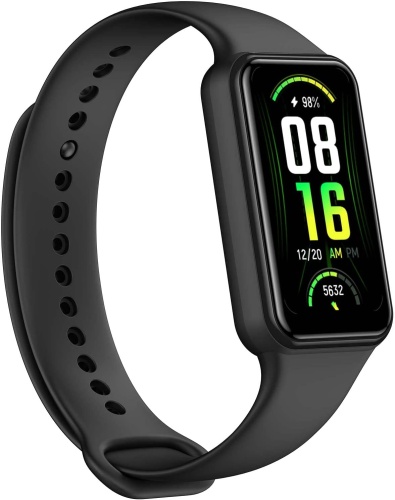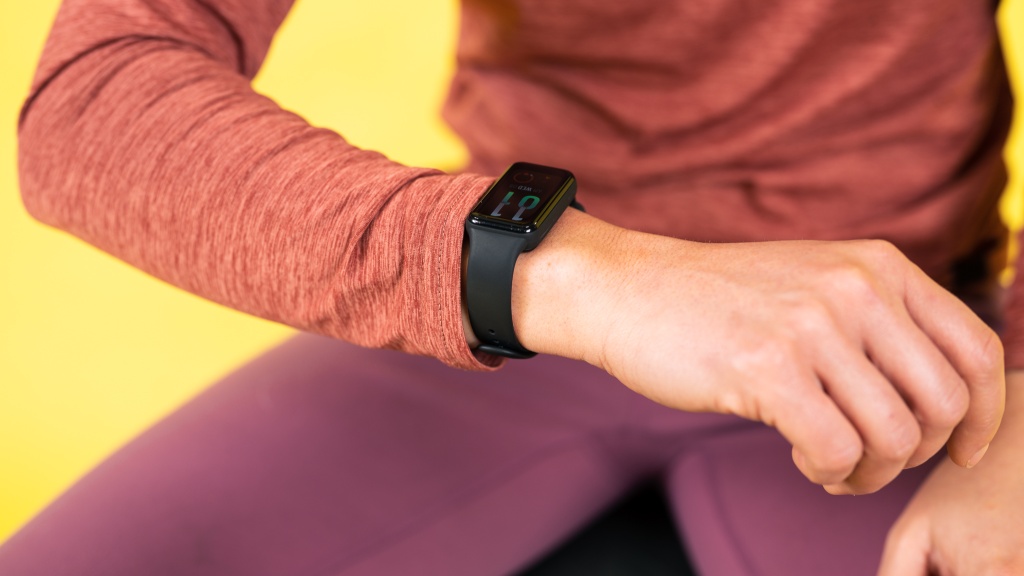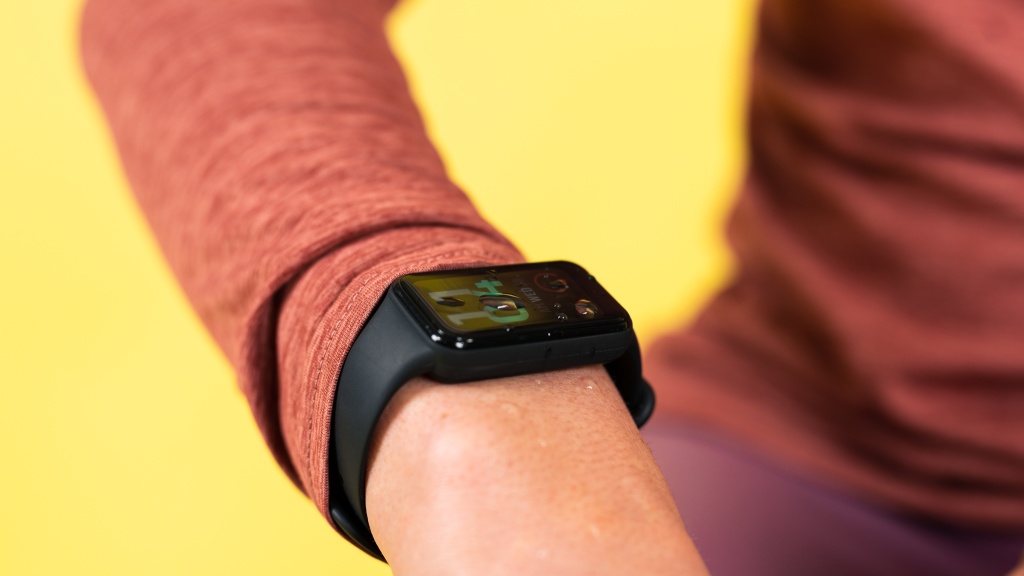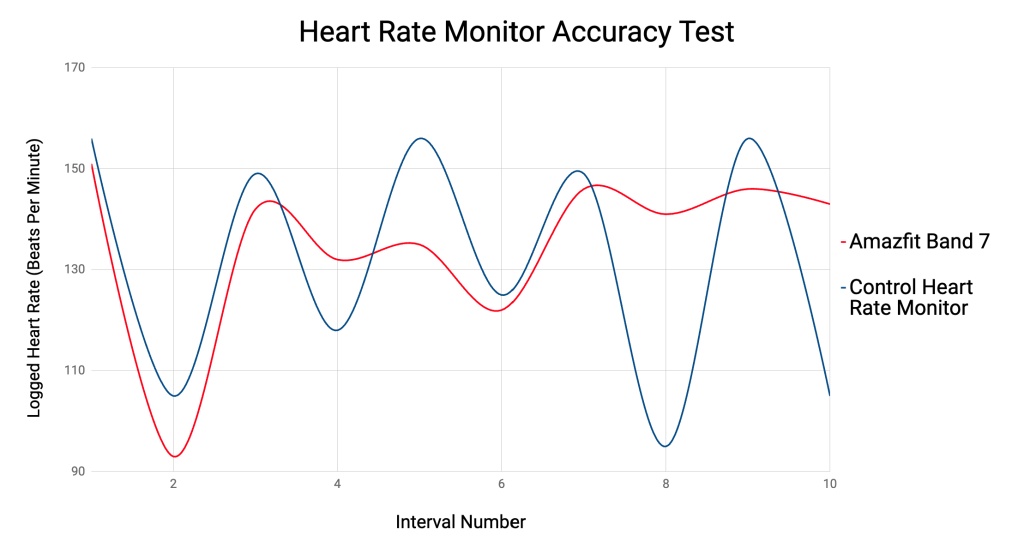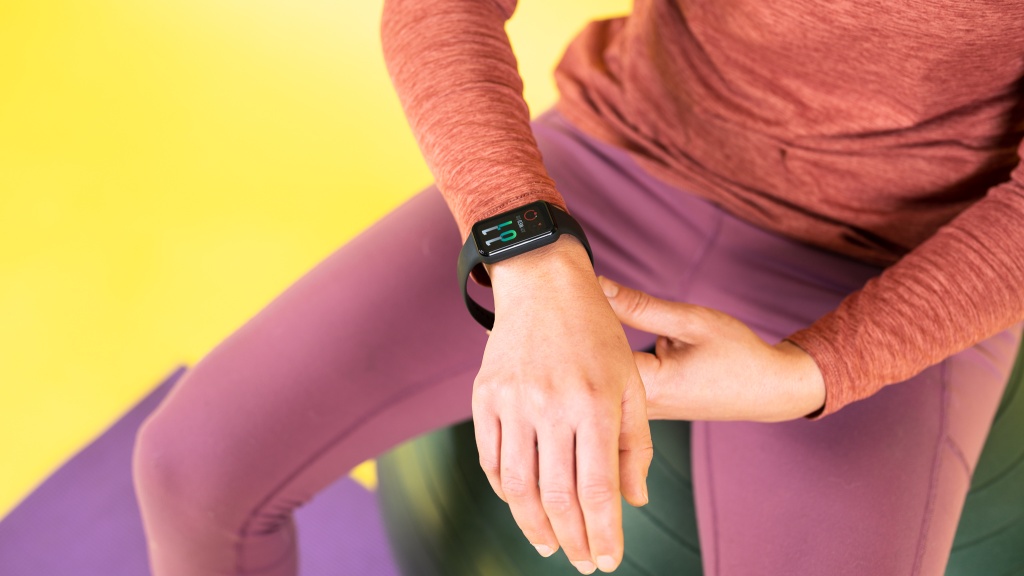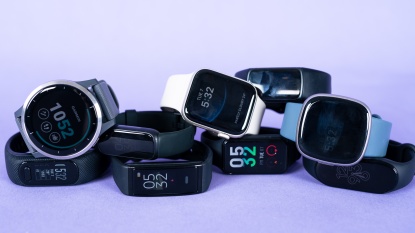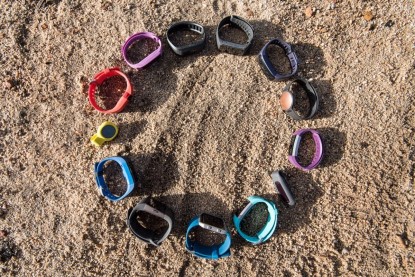Amazfit Band 7 Review
Our Verdict
Compare to Similar Products
 This Product Amazfit Band 7 | |||||
|---|---|---|---|---|---|
| Awards | Best Buy on a Tight Budget | Best Bang for the Buck | |||
| Price | $50 List $49.99 at Amazon | $100 List $99.95 at Amazon | $150 List $149.99 at Amazon | $150 List $144.99 at Amazon | $60 List |
Overall Score  |
|||||
| Star Rating | |||||
| Bottom Line | For individuals on a tight budget who can overlook inaccurate heart rate monitoring or a lack of dieting features, this could be an excellent choice | We recommend this product if you're looking for an affordable and lightweight fitness tracker that offers excellent fitness features | This tracker is highly recommended for data enthusiasts. It logs extensive information and presents it through numerous graphs for detailed analysis | A small display and a lack of responsiveness caused this average fitness tracker not to fall behind in our testing | While this tracker is inexpensive, we recommend exploring more accurate alternatives that can provide you with greater reliability and functionality |
| Rating Categories | Amazfit Band 7 | Fitbit Inspire 3 | Garmin Vivosmart 5 | Fitbit Charge 5 | Xiaomi Mi Band 7 |
| Fitness Impact (40%) | |||||
| Health Impact (30%) | |||||
| Ease of Use (15%) | |||||
| Display (10%) | |||||
| Ergonomics (5%) | |||||
| Specs | Amazfit Band 7 | Fitbit Inspire 3 | Garmin Vivosmart 5 | Fitbit Charge 5 | Xiaomi Mi Band 7 |
| Heart Rate Monitor | Yes | Yes | Yes | Yes | Yes |
| Altimeter (stair tracking) | No | No | No | No | No |
| Manufacturer Stated Battery life | Heavy Usage: 12 Days Typical Usage: 18 Days Battery Saver Mode: 28 Days |
Up to 10 days | Up to 7 days | Up to 7 days | Heavy Usage: 9 Days Typical Usage: 14 Days |
| Measured Charge Time | 1.75 Hours | 1.25 Hours | 1.5 Hours | 2 Hours | 1.5 Hours |
| Sensors | BioTracker™ 3.0 PPG biometric sensor (supports blood-oxygen, 1PD + 2LED), 3-Axis acceleration sensor, geomagnetic sensor |
3-Axis accelerometer, optical heart rate monitor, red and infrared sensors for blood oxygen (SpO2) monitoring, ambient light sensor | Garmin Elevate™ wrist heart rate monitor, accelerometer, ambient light sensor, pulse OX blood oxygen saturation monitor | 3-Axis accelerometer, optical heart rate monitor, GPS + GLONASS, red and infrared sensors for blood oxygen (SpO2) monitoring, ambient light sensor, device temperature sensor (skin temperature variation available in the Fitbit app), multipurpose electrical sensors compatible with ECG app & EDA Scan app | High precision 6-axis sensor and PPG heart rate sensor 6-axis sensor: Low power-consumption 3-axis accelerometer and 3-axis gyroscope PPG heart rate sensor |
| Memory | Not mentioned on site | Saves 7 days of detailed motion data, minute by minute, Saves daily totals for the last 30 days, Stores heart rate data at one-second intervals during exercise tracking and at five-second intervals all other times | 7 timed activities, 14 days of activity tracking data | 7 days of detailed motion data, minute by minute; daily totals 30 days | Not mentioned on site |
| Water Resistance | 5 ATM | 5 ATM | 5 ATM | 5 ATM | 5 ATM |
| Notifications | Text, call, push notifications | Text, call, push notifications | Text, call, push notifications | Text, call, push notifications | Text, call, push notifications |
| GPS Tracking | No | No | No | Yes | No |
| Music Control | No | Yes | Yes | No | Yes |
| Sleep Tracking | Yes | Yes | Yes | Yes | Yes |
Our Analysis and Test Results
The Amazfit Band 7 offers excellent walking accuracy, numerous exercise options, great battery life, and affordability, but lacks community features and has poor heart rate monitoring.
Performance Comparison
Fitness Impact
When evaluating the fitness impact of the Amazfit Band 7, we conducted a thorough analysis across various metrics. Our overall assessment considered the accuracy of the step tracker, cycling monitoring, stair climbing altimeter, workout activities, community features, and other trackable options. After aggregating the data, we found the Band 7 to be a solid performer in this category.
Starting with walking, we were impressed by its exceptional accuracy, with a negligible average difference of 5.7 steps compared to a manual counter. The Band 7 consistently provided precise distance measurements.
In terms of cycling tracking, while it recorded basic metrics adequately, it did not exhibit remarkable performance. Similarly, the workout tracking capabilities were average, lacking comprehensive real-time feedback during exercise. We wished for the ability to set intervals for comparing cardio exercises.
The Band 7 shines when it comes to the extensive range of other trackable options, offering an impressive selection of 118 activities grouped for convenient access. For example, outdoor workouts encompass activities like fishing, skateboarding, rollerblading, rock climbing, and parkour. However, we found that the data provided for specific sports was limited. For instance, while rock climbing, the Band 7 only captured duration, calories burned, and heart rate zones, falling short of delivering essential data such as elevation gain.
While the Band 7 lacks robust community features, it allows users to connect with friends and family through the addition of “family” and a QR code/scanner for easy connectivity. However, we observed a lack of substantial data beyond connecting with others.
Health Impact
In our evaluation of the health impact of the Amazfit Band 7, we focused on several key submetrics: heart rate monitoring, dieting, additional health indicators, and sleep tracking. Each of these aspects contributed to our overall assessment of the Band 7's health-related capabilities.
Starting with the heart rate monitor, we found its performance to be subpar, with an average absolute difference of 15.9. The Band 7 took the longest time to adjust and sometimes exhibited delays of over 30 seconds in accurately measuring heart rate. This aspect scored low in our assessment.
Moving on to dieting features, we were disappointed to find that the Band 7 lacked substantial capabilities in this area. While it provided basic functionalities such as calorie burn and BMI calculation based on manually input weight, it fell short when it came to food intake tracking. The absence of a meal journal or barcode scanning functionality rendered this particular feature relatively useless for average users.
On the positive side, the Band 7 offered a range of additional health indicators. It included features such as standing/inactivity reminders, menstrual tracking, stress detection, and a comprehensive personal physiological activity indicator (PAI) reading. Notably, the “one-tap measuring” option allowed users to conveniently obtain stress levels, heart rate, and blood oxygen readings simultaneously. However, the abundance of health readings raised questions about their practical significance and relevance to individuals' overall health and lifestyle.
While sleep tracking, the Band 7 exhibited some limitations. In certain trials, it failed to accurately log wake-up times, and there were even instances where an extra hour of sleep was recorded. However, the accompanying app provided comprehensive sleep data, including heart rate overlay on the sleep stage timeline, sleep quality scores, and comparisons of sleep patterns over different time periods. The app's graphical representation of falling asleep and waking up times throughout the week proved particularly useful for users seeking a simple overview of their sleep habits.
Ease of Use
In assessing the ease of use of the Amazfit Band 7, we examined four key submetrics: battery life, app functionality, navigating menus on the device, and ease of putting on. These aspects played a significant role in our overall evaluation of the Band 7's user-friendliness.
Starting with battery life, the Band 7 impressed us with its exceptional performance. Depending on usage, the battery can last up to 18 days, which is a remarkable feat. The charging process is simple, with two pins that securely connect the device to the charger. The strong magnet ensures a secure attachment, eliminating concerns about improper connection. Additionally, the Band 7 exhibited outstanding battery longevity, even after an extended period of minimal usage, indicating its efficiency compared to other trackers.
This tracker utilizes the Zepp app, which offers a streamlined user experience. The app features three tabs—homepage, health, and profile—and provides comprehensive analytics. We particularly appreciated the visual representation of step counts, combining numbers with data from the past week. However, the app's library of additional features was relatively limited, which is worth noting.
Navigating menus on the Band 7 proved to be intuitive and convenient. Similar to smartwatches, users can access an extended settings menu by pulling down on the screen. This quick access to settings enhances its usability. Swiping left shows notifications, while swiping right grants access to apps. Adjustments and personalization of the app list can be made within the preferences, further enhancing the device's user-friendliness.
When it comes to ease of putting on the Band 7, we encountered some challenges. The design requires users to maintain tension on the wristband while aligning the notch with the holes on the opposite band. This process can be cumbersome, as achieving the correct fit is somewhat unpredictable. However, once the device is on, tightening or loosening it is relatively easy. While the process may be slightly frustrating initially, the Band 7's classic watch-style design offers familiarity and convenience.
Display
In evaluating the display of the Amazfit Band 7, we focused on three key submetrics: screen quality, responsiveness, and smart notifications. Each aspect played a significant role in our assessment of the Band 7's display performance.
Starting with screen quality, the Band 7 offers a bright and vibrant display, making it easily visible both indoors and outdoors. However, there is a slight visual distortion caused by the presence of a coated screen or tinted layer that becomes noticeable when the device is viewed from angles other than perpendicular.
In terms of responsiveness, the Band 7 proved to be quite satisfactory. It accurately registered quick finger strikes while navigating menus, particularly when moving up and down. Although it exhibited a slightly lower responsiveness when swiping side-to-side, it was not significant enough to cause frustration or hinder usability, setting it apart from some other trackers in this aspect.
The Band 7 offers smart notifications, including text messages, calls, and push notifications. These alerts enhance the device's functionality and keep users informed without needing to check their smartphones constantly.
Ergonomics
When evaluating the ergonomics of the Amazfit Band 7, we focused on two key aspects: comfort and profile design.
The Amazfit Band 7 showcases decent comfort and a well-designed profile. While there is a slight pressure point from the sensor underneath, it is relatively standard and not a major concern. The band's larger surface area helps distribute the pressure. The device's increased screen size and width contribute to its modern aesthetic and improved profile design.
Should You Buy the Amazfit Band 7?
This wearable is only going to provide value as an introductory fitness tracker. For its price, it has solid fitness tracking capabilities but dwarfs in absolute terms compared to more expensive options. Those who are interested in an elite tracker should look elsewhere.
What Other Fitness Trackers Should You Consider?
The Band 7 is a great choice on a budget, but spending a little more for a better tracker could be worth it. The Fit Bit Inspire 3 offers more advanced capabilities in all metrics at a slightly higher price. If a budget option is not up your alley and you desire an advanced tracker for extended outdoor use, try the Garmin Vivoactive 5.


